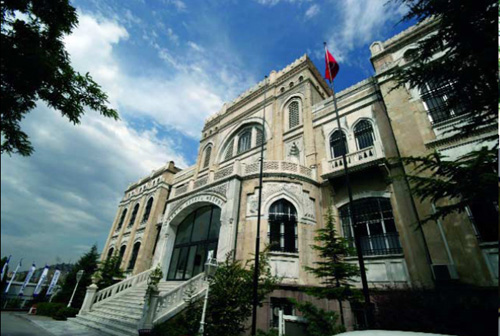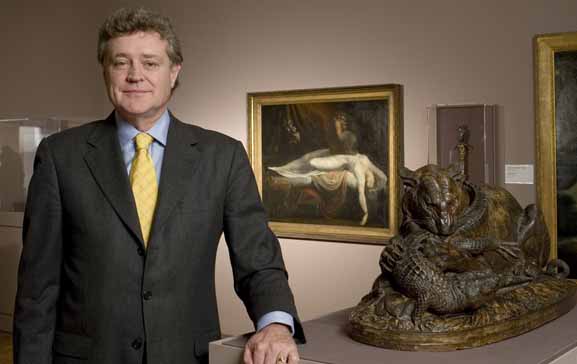Not every new gallery or exhibition is automatically or immediately reviewed. Yet I expected some reaction by the Boston media to the newly refurbished and rehung Koch Gallery at the Museum of Fine Arts in Boston, which was unveiled on Saturday.
 Why? This was the first (I believe) gallery that Malcolm Rogers, MFA’s director, has specifically taken charge of since he named himself “acting†director of the Art of Europe there late last year, after the former chair of Art of Europe, George Shackelford, announced his departure to the Kimbell Art Museum in Ft. Worth, Tex.
Why? This was the first (I believe) gallery that Malcolm Rogers, MFA’s director, has specifically taken charge of since he named himself “acting†director of the Art of Europe there late last year, after the former chair of Art of Europe, George Shackelford, announced his departure to the Kimbell Art Museum in Ft. Worth, Tex.
The MFA is calling this gallery its “Great Hall,” harking back to the castles built in Europe in the Middle Ages. This biggest, most impressive room in the museum seems tailor-made for billionaire William Koch, its namesake. Not aligned with his conservative brothers David and Charles Koch, Bill Koch is a bit of a renegade — he gives to both parties — and Rogers has been courting him for years, even giving his eclectic collection an exhibition in 2005. It was controversial. At the time, the Boston Globe said the 100 objects on display ranged from “antique firearms to French Impressionist paintings and 20th-century sculptures,” plus of course his two (in)famous “racing sailboats, their masts rising 125 feet in the air — nearly twice the height of the MFA’s roof.”  Few people applauded.
In the last few years, the MFA’s installations have been less controversial: not everyone loves the new Art of the Americas wing or the Linde Family wing for contemporary art, but they are defensible.
But now, with the Koch gallery, Rogers seems to be returning to his strategy of being iconoclastic to stir things up, despite the fact that he told me in 2010 that “I don’t feel the need to be controversial anymore, but I want to do new things,” which I used in an article for the Wall Street Journal.
What is now the Koch gallery had shown paintings from 16th- and 17th-century Italy, France, Spain, and Flanders, and it still does. Rogers has also pulled four 17th Century tapestries from storage, and hung them amidst the paintings. Fine, I guess, as I believe this gallery was built for tapestries (which it contained until 1996; some people says it’s dreadful for paintings). But at the center of one wall, Rogers has made a huge, garish display of Hanoverian silver pieces. It extends 18 feet from top to bottom and includes 103 pieces. The silver has little if anything to do with the paintings in the gallery.
A bit horrified for myself, I’ve inquired around among art historians. The consensus: Rogers seems to be decorating, not hanging great works of art. He’s equating the likes of a Velasquez, whose Don Baltasar Carlos and Dwarf is among the paintings on view, with household decorative furnishings, made for a drawing room.
Now, the museum says that 40 paintings hang in the gallery. See more details here. Cutely, the MFA has produced a speeded-up video of the transformation, here.
The museum isn’t shrinking from the decorative descriptions. In fact, a Gallery Talk, set for later this month, is entitled “A Display Fit for a King: A New Installation of Hanoverian Silver for Art of Europe.” It will focus not on the paintings, but on “Hanoverian silver and gold illustrating the magnificence of the Hanoverian court from the mid-seventeenth to the early nineteenth centuries.”
As much as anyone can admire silver, it doesn’t really rise to the artistic and aesthetic value of masterpiece paintings, does it?
I think the MFA has gone wrong here. Unfortunately, for fear of retribution (no loans from the MFA), no one wants to agree with me on the record. And the critical silence, to use an old cliche, is deafening.
Photo Credit: Courtesy of the MFA (and Photoshop)





